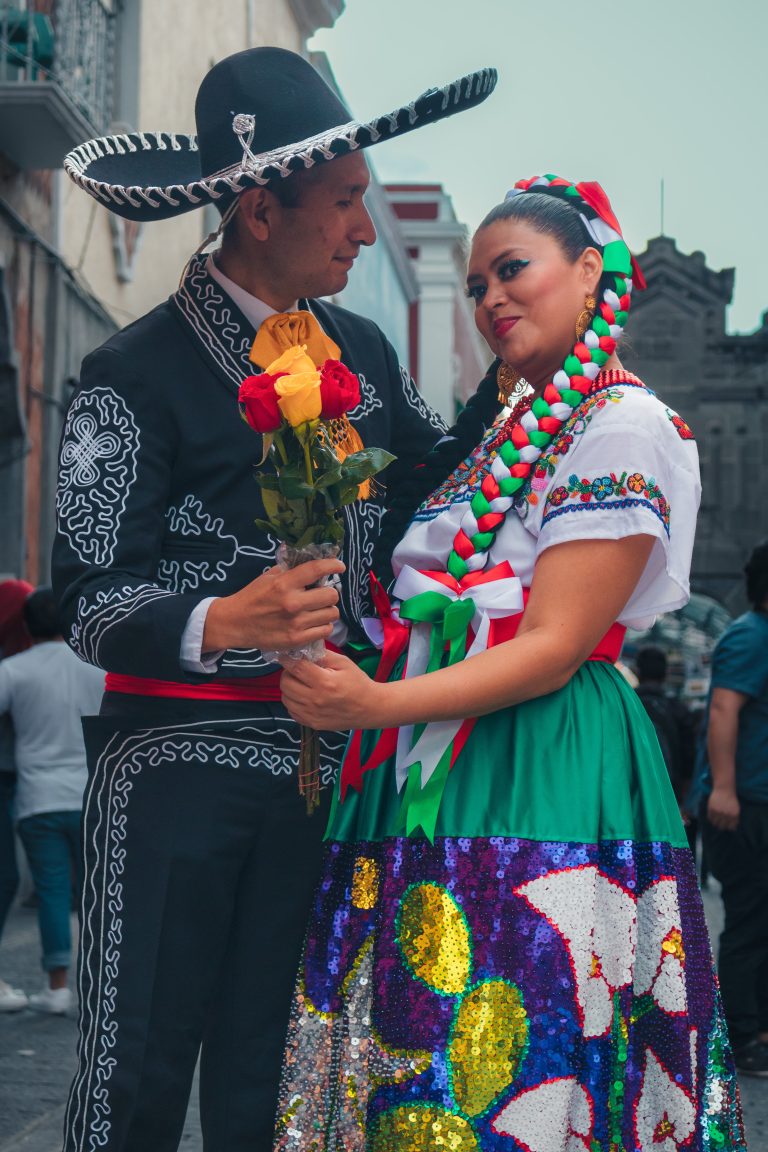
South America – Traditional Garments
24 February, 2023Traditional Latin American garments have a rich history that dates back centuries. Before the Spanish conquest, most of the clothing worn by the indigenous people of Latin America was made from cotton, wool, and fibers from the agave plant. The clothing was often loose and comfortable, designed to keep cool in hot climates.
The Spanish colonization of Latin America changed the clothing landscape of the region. The Spanish brought their own styles of clothing and fabrics, introducing items such as ruffled collars and cuffs, lace, and embroidery. The traditional fabrics of the region, such as wool and cotton, were now combined with Spanish fabrics, such as silk and velvet.
In the 19th century, the traditional garments of Latin America underwent a transformation. As different countries gained independence, new styles of clothing evolved that combined regional and European influences. The traditional clothing of Mexico and Central America tended to be colorful, with bright colors and intricate designs. The traditional clothing of South America was more subdued, often featuring darker colors and simpler designs.
That being said, South America is home to a wide variety of traditional garments, many of which have been worn for centuries;
The most iconic of these is the poncho. It is a loose-fitting garment made of woven fabric, often wool, and is typically fastened around the neck with a drawstring or button. The traditional Latin American poncho is a versatile and comfortable clothing item, which can be worn in a variety of ways. In some Latin American countries, such as Mexico, the poncho is often worn during special occasions like festivals, religious ceremonies, and traditional dances. The traditional style of the poncho is typically very colorful and adorned with intricate designs, often featuring symbols and motifs associated with the culture of the wearer. The traditional Latin American poncho is also very practical, providing protection from the elements while allowing the wearer to remain cool in hot climates. The poncho is often layered over another piece of clothing, such as a shirt, to provide additional protection against the cold. Additionally, the poncho is sometimes used as a blanket or sleeping bag.
The lliclla, is a type of dress or skirt, typically worn by women. It is characterized by its many layers of fabric, which are often brightly colored and patterned. The lliclla is usually ankle-length and has a drawstring closure at the waist. The lliclla is believed to have originated in the Andean region of South America, and it has been worn by women in the region for centuries. It is typically part of a woman’s everyday wardrobe and is often worn for special occasions, such as weddings, festivals, and religious ceremonies. The lliclla is an important symbol of Latin American culture and identity. It is often seen as a representation of the strength and resilience of Latin American women, and it is also a symbol of their connection to the land and their Indigenous heritage. The lliclla is a versatile garment that can be worn in a variety of ways, depending on the occasion. It can be layered over other clothing or worn as a single piece. It can also be accessorized with jewelry or a wide variety of hats.
In the Amazon region, Brazil, and Colombia, the hammock is a popular garment, almost as popular as the Cookie Casino login. Hammocks are made of cotton or hemp and feature an open weave pattern. This garment is worn by both men and women, and can be used as a hammock or a blanket.
Finally, in the Caribbean islands, the guayabera is a traditional garment. This shirt is made of lightweight cotton and has long, pleated sleeves that reach almost to the knees. It is often worn with a matching pair of trousers and can be found in a variety of colors and patterns. These are just a few of the traditional garments that can be found throughout South America.
Each region has its own unique style, and these garments are a great way to express the culture and traditions of the area.
Follow Sounds and Colours: Facebook / Twitter / Instagram / Mixcloud / Soundcloud / Bandcamp
Subscribe to the Sounds and Colours Newsletter for regular updates, news and competitions bringing the best of Latin American culture direct to your Inbox.

